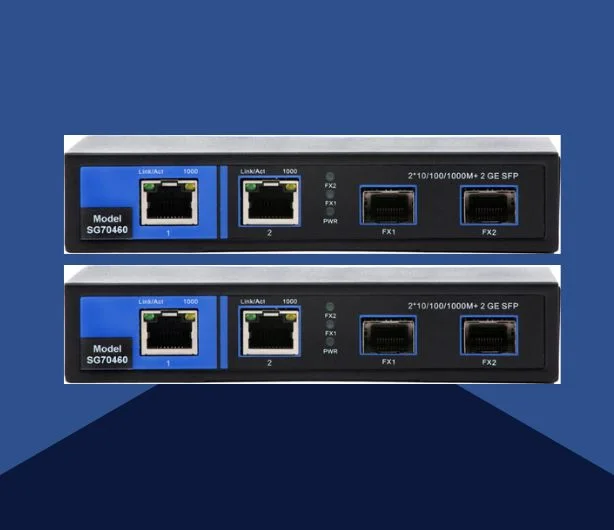What Are Unmanaged Fiber Optic Switches?

Key Features of Unmanaged Fiber Optic Switches
- Plug-and-Play Operation
- No configuration required—connect the switch to the network, and it starts working automatically.
- Ideal for users without networking expertise.
- High-Speed Data Transmission
- Utilizes fiber optic connections to deliver speeds ranging from 1 Gbps to 10 Gbps and beyond.
- Reduces electromagnetic interference (EMI) and signal degradation.
- Compact and Space-Efficient Design
- Available in small, lightweight enclosures for easy installation.
- Suitable for space-constrained environments such as control rooms and security cabinets.
- Energy Efficiency
- Many models include power-saving features such as automatic port shutdown when no data transmission is detected.
- Reduces overall energy consumption while maintaining high performance.
- Durable and Reliable Performance
- Some models are designed for industrial environments, featuring rugged enclosures and wide temperature tolerance.
- Can operate in harsh conditions, including extreme temperatures and high-vibration settings.
6. Cost-Effective Solution
- Lower initial cost compared to managed fiber optic switches.
- No need for additional software, licenses, or ongoing maintenance.
- Basic Network Expansion
- Allows easy expansion of fiber networks in remote locations or small offices.
- Supports multiple fiber transceiver options, including SFP, SC, and LC connectors.
Benefits of Using Unmanaged Fiber Optic Switches
Ease of Use
No configuration or specialized knowledge is needed—simply connect the devices, and the switch begins operating automatically.

Reliable Data Transmission
Fiber optic technology ensures secure, high-speed communication with minimal latency and interference.
Reduced Setup Time
Installation takes only minutes, making these switches ideal for quick deployment in time-sensitive applications.
Maintenance-Free Operation
No need for firmware updates, complex troubleshooting, or network monitoring. Ideal for applications where minimal maintenance is preferred.
Cost Savings
Unmanaged switches are more affordable than managed alternatives, making them a budget-friendly option for small networks.
Enhanced Security through Fiber Optics
Fiber optic connections are more secure than copper cables, reducing the risk of data interception. Immune to electromagnetic interference, ensuring stable performance in industrial and high-noise environments.
Factors to Consider When Choosing an Unmanaged Fiber Optic Switch
1. Number of Ports: Determine the number of devices that need to be connected and choose a switch with sufficient port capacity.
2. Transmission Speed: Select a switch that supports the required data rate, such as 1 Gbps, 10 Gbps, or higher, based on network demands.
3. Fiber Optic Connector Type: Ensure compatibility with existing fiber optic cables and transceivers (e.g., SC, LC, SFP).
4. Environmental Conditions: For industrial applications, choose a rugged switch with wide temperature tolerance and protective housing.
5. Power Supply Options: Some switches support Power over Ethernet (PoE), allowing them to power connected devices such as cameras and access points.
6. Distance and Coverage: Consider the transmission distance required, as some fiber optic switches support longer range connections than others.
7. Mounting and Installation: Choose between desktop, rack-mounted, or DIN-rail-mounted options depending on deployment needs.

